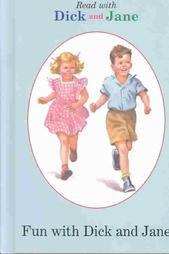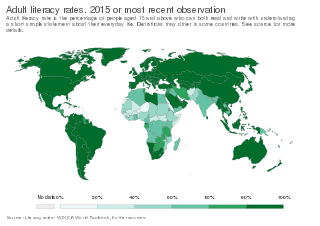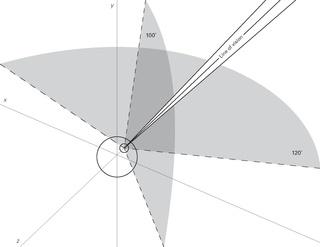 W
WReading is the process of taking in the sense or meaning of letters, symbols, etc., especially by sight or touch.
 W
WDyslexia, also known as reading disorder, is a disorder characterized by difficulty reading in individuals with otherwise unaffected intelligence. Different people are affected to different degrees. Problems may include difficulties in spelling words, reading quickly, writing words, "sounding out" words in the head, pronouncing words when reading aloud and understanding what one reads. Often these difficulties are first noticed at school. When someone who previously could read loses their ability, it is known as "alexia". The difficulties are involuntary and people with this disorder have a normal desire to learn. People with dyslexia have higher rates of attention deficit hyperactivity disorder (ADHD), developmental language disorders, and difficulties with numbers.
 W
WHyperlexia is a syndrome characterized by a child's precocious ability to read. It was initially identified by Norman E. Silberberg and Margaret C. Silberberg (1967), who defined it as the precocious ability to read words without prior training in learning to read, typically before the age of five. They indicated that children with hyperlexia have a significantly higher word-decoding ability than their reading comprehension levels. Children with hyperlexia also present with an intense fascination for written material at a very early age.
 W
WAmerica's Children's Museum on Wheels: StoryBus is a children's literacy museum on wheels that visits schools and community events in the Chicago area. Housed inside a 37-foot Winnebago, the bus promotes reading to students at the kindergarten and pre-k levels. Filled with a rotating collection of hands-on interactive exhibits, the StoryBus transports children inside the worlds of favorite children's stories, such as The Little Red Hen, The Three Little Pigs, and Goldilocks and the Three Bears.
 W
WThe Ant and Bee stories are a series of small-format hardback books written by Angela Banner . She began writing the books in order to teach her son how to read. Angela Mary Lincke married Major Lionel Maddison Parsons and had two children.
 W
WBathroom reading is the act of reading text while in a bathroom, usually while sitting on the toilet and defecating. The practice has been common throughout history and remains widespread today with both printed material and smartphones.
 W
WBibliophilia or bibliophilism is the love of books. A bibliophile or bookworm is an individual who loves and frequently reads books.
 W
WThe bookwheel is a type of rotating bookcase that allows one person to read multiple books in one location with ease. The books are rotated vertically similar to the motion of a water wheel, as opposed to rotating on a flat table surface. The design for the bookwheel originally appeared in a 16th-century illustration by Agostino Ramelli at a time when large books posed practical problems for readers. Ramelli's design influenced other engineers and, though now obsolete, inspires modern artists and historians.
 W
WChalcography, are engravings on copper plates used for printmaking and illustrations, although the term has also been used of engravings on any type of metal. The Monte dei Santi di Dio by Antonio Bettini is the most ancient book bearing chalcographies, printed in Florence on September 10, 1477 from Nicolo di Lorenzo Tedesco. Its primacy is contested by Ptolemy's Cosmographia, printed in Bologna on June 23, 1477 from Domenico de' Lapi, a Latin translation from Jacopo d'Angelo, containing geographical charts and maps by Taddeo Crivelli, engraved in copper plates.
 W
WDick and Jane are the two main characters created by Zerna Sharp for a series of basal readers written by William S. Gray to teach children to read. The characters first appeared in the Elson-Gray Readers in 1930 and continued in a subsequent series of books through the final version in 1965. These readers were used in classrooms in the United States and in other English-speaking countries for nearly four decades, reaching the height of their popularity in the 1950s, when 80 percent of first-grade students in the United States used them. Although the Dick and Jane series of primers continued to be sold until 1973 and remained in use in some classrooms throughout the 1970s, they were replaced with other reading texts by the 1980s and gradually disappeared from school curricula. The Dick and Jane series were known for their simple narrative text and watercolor illustrations. Despite the criticisms of the stereotypical content that depicted white, middle-class Americans and the whole-word (look-say) method of teaching reading on which these readers are based, the characters of "Dick", "Jane", and their younger sister, "Sally", became household words. The Dick and Jane primers have also become icons of mid-century American culture and collectors' items.
 W
WThe English Phonotypic Alphabet is a phonetic alphabet developed by Sir Isaac Pitman and Alexander John Ellis originally as an English language spelling reform. Although never gaining wide acceptance, elements of it were incorporated into the modern International Phonetic Alphabet.
 W
WExtensive Reading (ER) is the process of reading longer easier texts for an extended period of time without a breakdown of comprehension, feeling overwhelmed, or the need to take breaks. It stands in contrast to intensive or academic reading, which is focused on a close reading of dense shorter texts, typically not read for pleasure. Though used as a teaching strategy to promote second-language development, ER also applies to free voluntary reading and recreational reading both in and out of the classroom. ER is based on the assumption that we learn to read by reading.
 W
WEye movement in music reading is the scanning of a musical score by a musician's eyes. This usually occurs as the music is read during performance, although musicians sometimes scan music silently to study it. The phenomenon has been studied by researchers from a range of backgrounds, including cognitive psychology and music education. These studies have typically reflected a curiosity among performing musicians about a central process in their craft, and a hope that investigating eye movement might help in the development of more effective methods of training musicians' sight reading skills.
 W
WIncremental reading is a software-assisted method for learning and retaining information from reading, which involves the creation of flashcards out of electronic articles. "Incremental reading" means "reading in portions". Instead of a linear reading of articles one at a time, the method works by keeping a large reading list of electronic articles or books and reading parts of several articles in each session. Articles in the reading list are prioritized by the user. In the course of reading, key points of articles are broken up into flashcards, which are then learned and reviewed over an extended period of time with the help of a spaced repetition algorithm.
 W
WExtensive Reading (ER) is the process of reading longer easier texts for an extended period of time without a breakdown of comprehension, feeling overwhelmed, or the need to take breaks. It stands in contrast to intensive or academic reading, which is focused on a close reading of dense shorter texts, typically not read for pleasure. Though used as a teaching strategy to promote second-language development, ER also applies to free voluntary reading and recreational reading both in and out of the classroom. ER is based on the assumption that we learn to read by reading.
 W
WJanet and John is a series of early reading books for children, originally published in the UK by James Nisbet and Co in four volumes in 1949–50, and one of the first to make use of the "look and say" approach. Further volumes appeared later, and the series became a sales success in the 1950s and 60s, both in the UK and in New Zealand. By the 1970s, the books were considered outdated, and several updated versions were issued. Facsimiles of two of the original volumes were reprinted in 2007 to cater for the nostalgia market.
 W
WThe Key Words Reading Scheme is a series of 36 English language early readers children's books, published by the British publishing company, Ladybird Books. The series are also often referred to as Peter and Jane, the names of the main characters.
 W
WThe Kids' Lit Quiz is an annual literature competition, in which teams of four students, aged 10 to 14, work together to answer wide-ranging literary questions. The winning team from each region competes in the national final. The winner of the national final is then invited to the World Final held annually in July or August. Since its inception in 1991, thousands of students have participated each year throughout the world.
 W
WLiteracy is popularly understood as an ability to read and write in at least one method of writing, an understanding reflected by mainstream dictionaries. In this view, illiteracy would be considered to be the inability to read and write.
 W
WThe Eclectic Readers were a series of graded primers for grade levels 1-6. They were widely used as textbooks in American schools from the mid-19th century to the early 20th century, and are still used today in homeschooling.
 W
WA mind map is a diagram used to visually organize information. A mind map is hierarchical and shows relationships among pieces of the whole. It is often created around a single concept, drawn as an image in the center of a blank page, to which associated representations of ideas such as images, words and parts of words are added. Major ideas are connected directly to the central concept, and other ideas branch out from those major ideas.
 W
WIn cognitive psychology, the missing letter effect refers to the finding that, when people are asked to consciously detect target letters while reading text, they miss more letters in frequent function words than in less frequent, content words. Understanding how, why and where this effect arises becomes useful in explaining the range of cognitive processes that are associated with reading text. The missing letter effect has also been referred to as the reverse word superiority effect, since it describes a phenomenon where letters in more frequent words fail to be identified, instead of letter identification benefitting from increased word frequency.
 W
WThe New England Primer was the first reading primer designed for the American colonies. It became the most successful educational textbook published in 17th-century colonial United States and it became the foundation of most schooling before the 1790s.
 W
WThe IEA's Progress in International Reading Literacy Study (PIRLS) is an international study of reading (comprehension) achievement in fourth graders. It has been conducted every five years since 2001 by the International Association for the Evaluation of Educational Achievement (IEA). It is designed to measure children's reading literacy achievement, to provide a baseline for future studies of trends in achievement, and to gather information about children's home and school experiences in learning to read.
 W
WSally Shaywitz is an American physician-scientist who is the Audrey G. Ratner Professor in Learning Development at Yale University. She is the co-founder and co-director of the Yale Center for Dyslexia & Creativity. Her research provides the framework for modern understanding of dyslexia.
 W
WIn music, sight-reading, also called a prima vista, is the practice of reading and performing of a piece of song in a music notation that the performer has not seen or learned before. Sight-singing is used to describe a singer who is sight-reading. Both activities require the musician to play or sing the notated rhythms and pitches.
 W
WSpeed reading is any of many techniques claiming to improve one's ability to read quickly. Speed-reading methods include chunking and minimizing subvocalization. The many available speed-reading training programs may utilise books, videos, software, and seminars. There is little scientific evidence regarding speed reading, and as a result its value seems uncertain. Cognitive neuroscientist Stanislas Dehaene says that claims of reading up to 1,000 words per minute "must be viewed with skepticism".
 W
WSubvocal recognition (SVR) is the process of taking subvocalization and converting the detected results to a digital output, aural or text-based.
 W
WSubvocalization, or silent speech, is the internal speech typically made when reading; it provides the sound of the word as it is read. This is a natural process when reading, and it helps the mind to access meanings to comprehend and remember what is read, potentially reducing cognitive load.
 W
WSustained silent reading (SSR) is a form of school-based recreational reading, or free voluntary reading, where students read silently in a designated time period every day in school. An underlying assumption of SSR is that students learn to read by reading constantly. Successful models of SSR typically allow students to select their own books and require neither testing for comprehension nor book reports. Schools have implemented SSR under a variety of names, such as "Drop Everything and Read (DEAR)", "Free Uninterrupted Reading (FUR)", or "Uninterrupted sustained silent reading (USSR)".
 W
WSynthetic phonics, also known as blended phonics or inductive phonics, is a method of teaching English reading which first teaches the letter sounds and then builds up to blending these sounds together to achieve full pronunciation of whole words.
 W
WThorbjørn Egners lesebøker were a series of sixteen readers for elementary school written by Norwegian author Thorbjørn Egner. Egner spent 25 years working on the series – consisting of collected literature as well as his own stories and illustrations – and they were published in 1950–1972. The books were intended for children aged 8–15, which at the time corresponded to grades 2nd–9th. Among the recurring characters was the young boy Ola-Ola, who grew up on a farm on the Norwegian countryside, but later moved to the city and had to adapt to a new life. Other stories took place in far-away lands, reminiscent of the environment in Egner's celebrated When the Robbers Came to Cardamom Town. There was also a selection of songs and poems in between the stories.
 W
W"Time Enough at Last" is the eighth episode of the American television anthology series The Twilight Zone. The episode was adapted from a short story written by Lynn Venable. The short story appeared in the January 1953 edition of the science fiction magazine If: Worlds of Science Fiction about seven years before the television episode first aired.
 W
WThe UNESCO Institute for Lifelong Learning (UIL), formerly UNESCO Institute for Education, is one of six educational institutes of UNESCO. It is a non-profit international research, training, information, documentation and publishing centre on literacy, non-formal education, adult and lifelong learning. It provides services to UNESCO's Member States, NGOs, and grassroots and community organizations, as well as to partners in civil society and the private sector. The Institute works in close collaboration with its Paris headquarters, with UNESCO field offices in different countries, with sister institutes and with national and international partners.
 W
WVision span or perceptual span is a controversial concept referring to the angular span, within which the human eye has sharp enough vision to perform an action accurately. The visual field of the human eye spans approximately 120 degrees of arc. However, most of that arc is peripheral vision. The human eye has much greater resolution in the macula, where there is a higher density of cone cells. The macula has a diameter of about 16 degrees of the retina. The field of view that is observed with sufficient resolution to read text typically spans about 6 degrees of arc, which is wide enough to allow a clear view of about five words in a row when printed text at ordinary size is held about 50 centimeters from the eyes. Regarding face processing, the field of view with a sufficient amount of information in order to recognise faces accurately spans about 7° which represents about 45% of a face. The brain creates the illusion of having a greater visual span by automatically and unconsciously moving the center of vision into any area of interest in the field of view.
 W
WWomen reading in art refers to any artistic work representing or portraying one or more women in the act of reading. This subject matter is quite common, with images appearing as early as the 14th century. Viewers are often exposed to a private, personal moments through these works. Reading Woman (c.1660) by Pieter Janssans Elinga portrays reading as an intimate and introspective activity.
 W
WWorld Book Day, also known as World Book and Copyright Day or International Day of the Book, is an annual event organized by the United Nations Educational, Scientific and Cultural Organization (UNESCO) to promote reading, publishing, and copyright. The first World Book Day was celebrated on 23 April in 1995, and continues to be recognized on that day. A related event in the United Kingdom and Ireland is observed in March.
 W
WWorld Book Day is a charity event held annually in the United Kingdom and Ireland on the first Thursday in March. On World Book Day, every child in full-time education in the UK is given a voucher to be spent on books; the event was first celebrated in the United Kingdom in 1995.